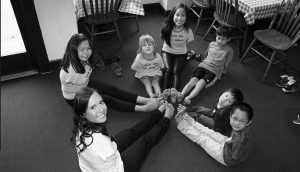Building a custom airplane
Jessica Cox wants to build the first exclusively foot-controlled airplane in history
After a decade of flying, Jessica Cox is known around the world as the first licensed armless pilot in history. Finding a video of her flying an Ercoupe is easy and millions of people have watched the various features or news stories. However, very few people have seen her fly in person. The reason isn’t just logistics. Flying an Ercoupe with just your feet is hard. Really hard.
Jessica’s reputation as a pilot opens doors around the world. This year Jessica has the opportunity to dial down the difficulty of flying by building a custom-controlled airplane. An airplane like this has never been built before which is poetically fitting for a pilot like her.
If successful, this custom airplane could serve as a model for other pilots with disabilities to explore or inspire new ideas. Jessica’s reach will expand from 50 miles around her home airport to virtually anywhere in North America. Most importantly, this pilot and airplane duo will serve as an undeniable reminder that “disability does not mean inability.”
How can you help Jessica?
Submit suggested designs for the cockpit: Email — (web form coming soon)
Donate to support the build:
Follow Jessica and Rightfooted Foundation International on Facebook
The Mission
Jessica has the ability to open doors and lay the groundwork for change.
In 2017, Jessica created Rightfooted Foundation International, a 501(c)(3) registered nonprofit in the United States. Through the work with RFI, Jessica helps shape the lives of children with limb differences.
Quick Stats
- 61 million adults in the United States live with a disability (26% of the US population).
- 1 in 3 US adults with disabilities (18-44 years) do not have a usual healthcare provider.
- 1 in 3 US adults with disabilities (18-44 years) have an unmet healthcare need because of cost in the past year.
- The US unemployment rate for people with disabilities was 7.3 % in 2019. Unemployment for the non-disabled was 3.5% in the same year.
- 1 in 5 people around the world will experience a disability in their lifetime according to the WHO. That’s more than 1 billion people.
Stigmas continue to create barriers for people with disabilities. The mission with this new airplane will be to accelerate Jessica’s advocacy throughout the USA.
Aviation events across the United States and Canada will provide a venue for Jessica to reach both adults and kids with her message. These events can have as many as 600,000 people attend (AirVenture 2019).
With an RV-10, the possibility exists to take the airplane and the mission beyond the borders of North America.
The fun part
Jessica also expects to be able to take kids with disabilities on flights. This once-in-a-lifetime experience could not be replicated in any other way. These flights will influence the kids to reconsider the possibilities for their future, both casually and professionally.
Doesn’t Jessica already have an airplane?
Yes. Jessica currently flies a 1946 ERCO Ercoupe 415-C with tail number N26R. As mentioned at the very beginning, though, the Ercoupe is not easy for Jessica to fly. She has to hold her legs crisscrossed up in the air in an already cramped cockpit in order to reach the controls. Jessica feels that she is only able to safely hold that position for thirty to forty-five minutes.
The Ercoupe is also not designed to be an exhibition platform. While 100 MPH sounds fast for a car, for airplanes the speed is considered slow. In the summer of 2020, Jessica wanted to use N26R to celebrate the 30th anniversary of the American’s with Disabilities Act in Washington, DC. It took a professional ferry pilot four days to get N26R from Tucson, AZ to Frederick, MD. Because of weather, headwinds, and mechanical issues, the return journey took 11 days. A quick, IFR airplane like an RV-10 could complete a trip like that in a much shorter period of time and allow Jessica to visit multiple locations in rapid succession.
Not to mention, N26R turned 75 years old in 2021. Regular maintenance can keep her flying for several years to come. However, the engine has not been manufactured in decades and parts are hard to find. Also, while thousands of Ercoupes were manufactured, they were designed to fly for a couple of decades but not become octogenarians. Spare parts for the airframe and mechanics who understand the Ercoupe’s design are likewise becoming harder to find every year.
What will she build?
At the time of writing this, the leading airframe for this custom build is a Van’s RV-10.
Ask anyone in the homebuilt experimental category of aircraft for the best company in the business and their answer will most likely be Van’s Aircraft. Van’s has been building homebuilt kits since the 1970s. More than 10,000 kits have been sold (as of November 2019). The RV-10 is Van’s only 4 seat aircraft. The combination of long-distance capability, payload capacity, wide cockpit, and other characteristics provide the best capability (in our opinion) for modifications and the best match for the mission.
In addition, Van’s has the highest standards for making the process of building a kit airplane relatively easy for even non-pilots. Plans include step-by-step instructions with detailed illustrations. The Van’s community of builders and pilots is active and engaged to help other builders complete their airplanes with advice and guidance. This community group is known unofficially as Van’s Airforce.
Extra support
A team of professional engineers has committed to helping Jessica ensure that any modifications can safely be applied to an RV-10. The inputs will be tested to ensure the modifications maintain safe control of the airplane and remain within Jessica’s physical capabilities.
Why an experimental airplane?
Certified airplanes like the Ercoupe must meet strict requirements and cannot be significantly changed without extraordinary time, expense, and red tape. Meanwhile, experimental aircraft enjoy more freedom for what can be modified and changed. Homebuilt kit airplanes have even more freedom. As an experimental, the finished airplane can continue to evolve and adapt to changing needs.
If you would like to support Jessica’s mission, use the links above to donate or submit suggestions. We thank you for your support!



